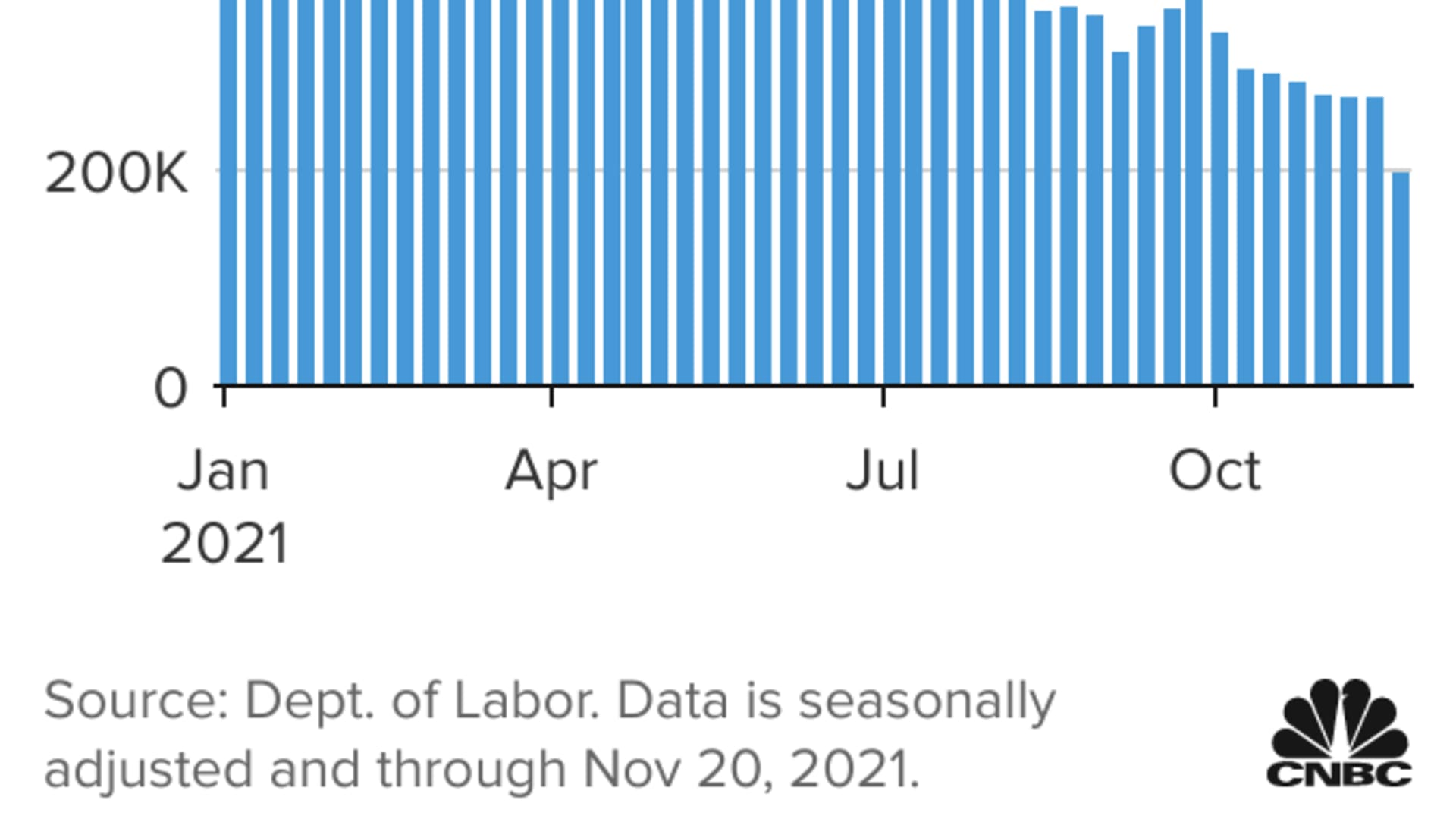
- Initial jobless claims totaled 199,000 last week, the lowest total since November 1969.
- Second-quarter GDP growth was revised slightly higher to 2.1%, a bit below estimates.
- Orders for long-lasting goods fell 0.5% for the month, below the expectation for a small gain.
The ranks of those submitting jobless claims tumbled to their lowest level in more than 52 years last week, the Labor Department reported Wednesday.
Watch NBC6 free wherever you are
>New filings totaled 199,000, a number not seen since Nov. 15, 1969, when claims totaled 197,000. The report easily beat Dow Jones estimates of 260,000 and was well below the previous week's 270,000.

Get local news you need to know to start your day with NBC 6's News Headlines newsletter.
>The Labor Department did not indicate any special factors that caused the stunning fall, which could provide an important signal about a jobs market that has been struggling to come back since the Covid-19 shock in March 2020.
The decline appeared at least in part to be due to seasonal adjustments. Unadjusted claims totaled 258,622, which actually was an increase of 7.6% from the previous week.
In other economic reports Wednesday morning, second-quarter GDP growth was revised up slightly to 2.1%, though that was below estimates for 2.2%. Also, durable goods orders declined 0.5%, worse than expectations of a 0.2% gain.
Along with the drop in weekly claims, continuing claims, which run a week behind, fell by 60,000 to 2.05 million, a fresh pandemic-era low and a strong sign that the labor market is getting notably tighter.

The total of those receiving benefits under all programs fell sharply, down by 752,390 to 2.43 million, according to data through Nov. 6.
Money Report
The data comes amid surging inflation in the U.S. that is running at its fastest pace in 30 years. Clogged ports and supply chains have been major contributors to higher prices as manufacturers and service providers meet escalating demand.
The tumble in weekly claims could get the attention of policymakers at the Federal Reserve who have kept crisis-level policies in place despite the steady improvement in the jobs market.
While the Fed already has said it will begin gradually reducing its monthly bond purchases, markets are watching closely to see when the central bank might start raising interest rates. Though officials have indicated a possibility of perhaps one rate hike in 2022, traders are now indicating about a 61% probability of three increases next year, according to the CME's FedWatch tracker.
Government bond yields were higher after the report, and Wall Street braced for a negative open in stocks.
The drop in claims came alongside indications that the economy grew a bit faster than originally thought over the summer, though not quite as quickly as Wall Street had expected.
GDP, a total of all goods and services produced, increased one-tenth of a percentage point from the initial estimate of 2%, mostly on the backs of upward revisions in consumer purchases and private inventory investment, according to the Commerce Department.
The report also saw a massive revision to the increase in wages and salaries, which rose $301.1 billion, an upward revision of more than 50% from the original estimate.
Finally, a separate report showed that orders for longer-lasting goods fell for the second consecutive month.
However, excluding transportation, durable goods orders increased 0.5%, and excluding defense, they were up 0.8%.
Nondefense new orders for capital goods, a proxy for business investment, fell 1.2% for the month. However, shipments, unfilled orders and inventories all rose.






